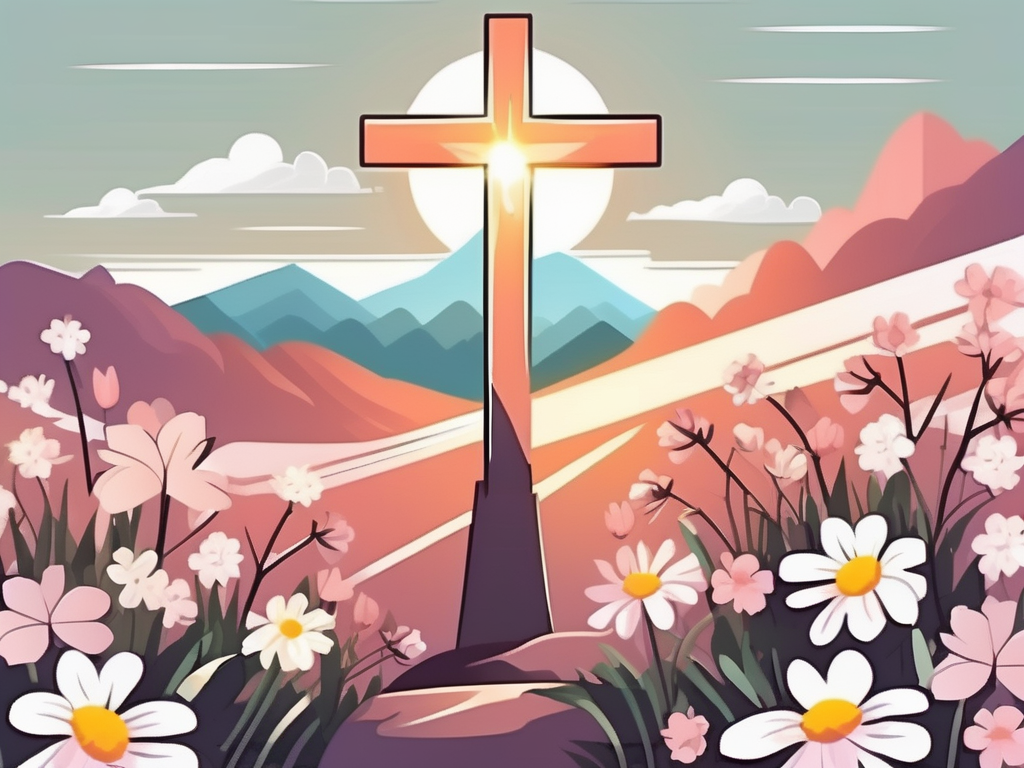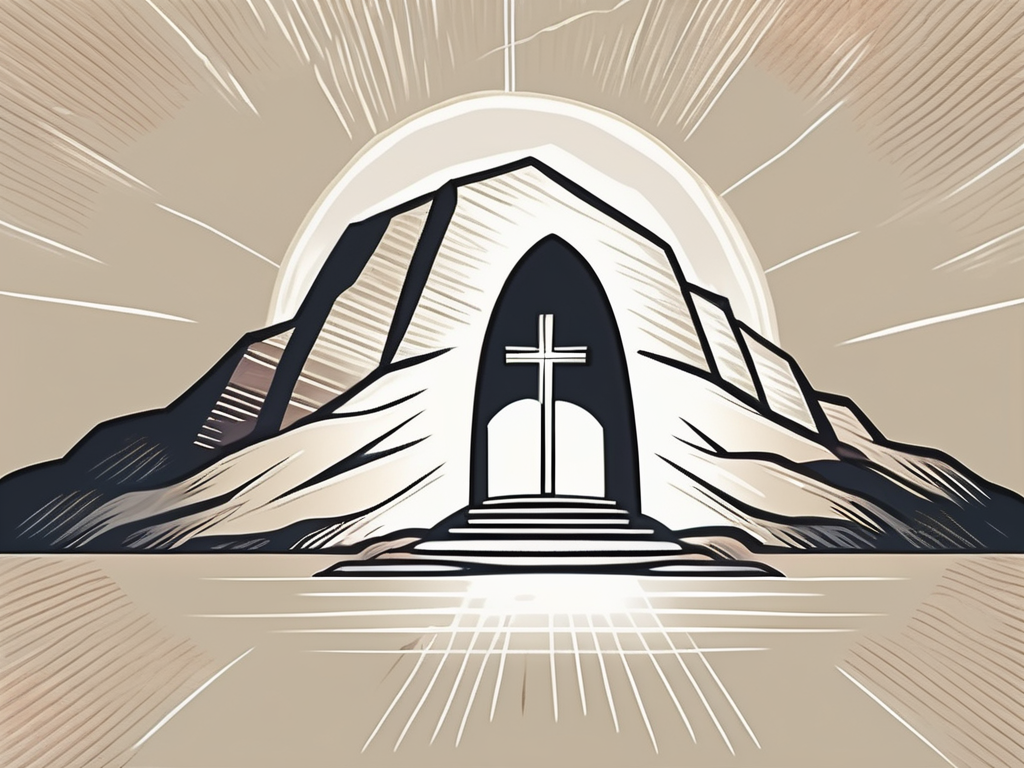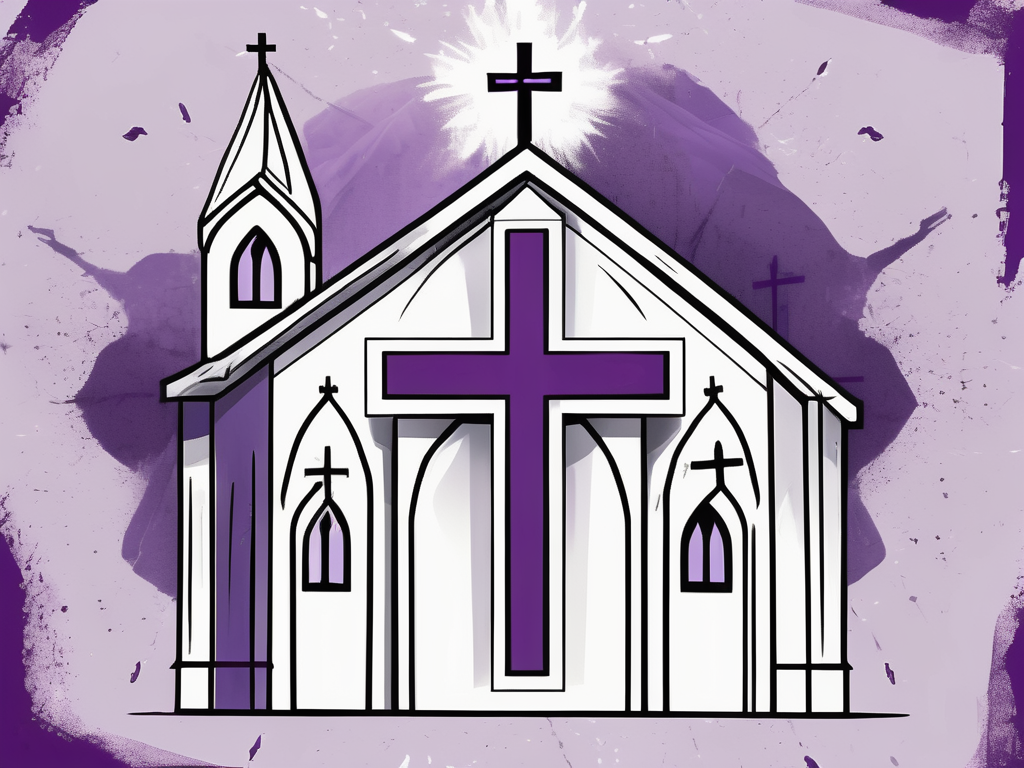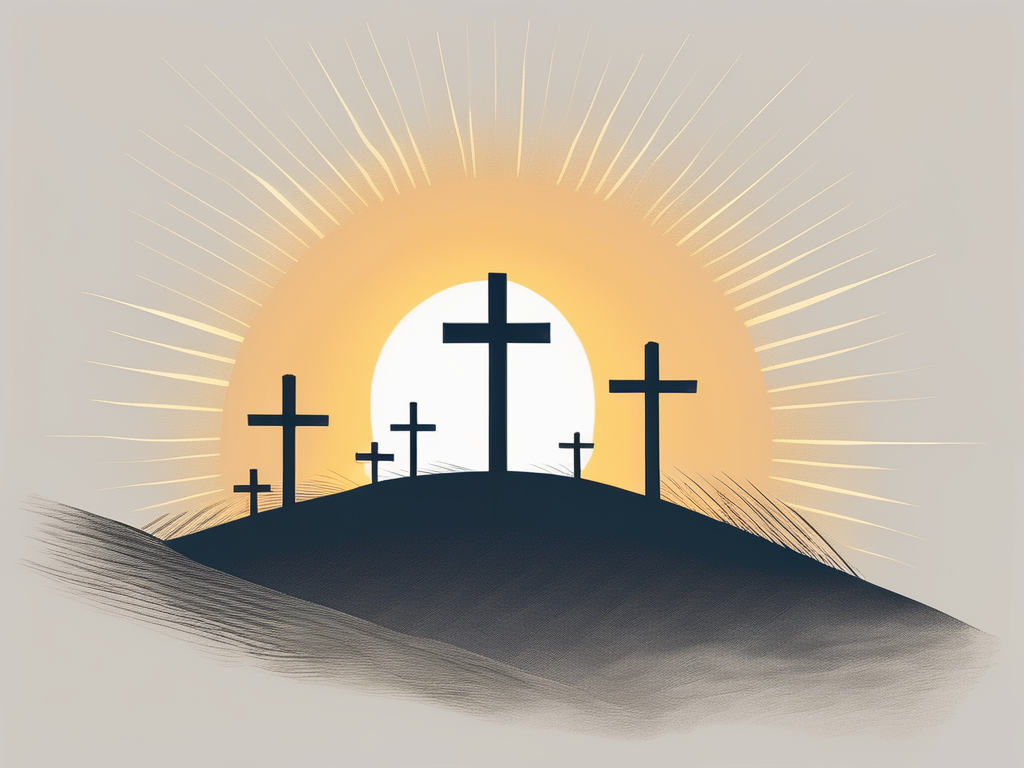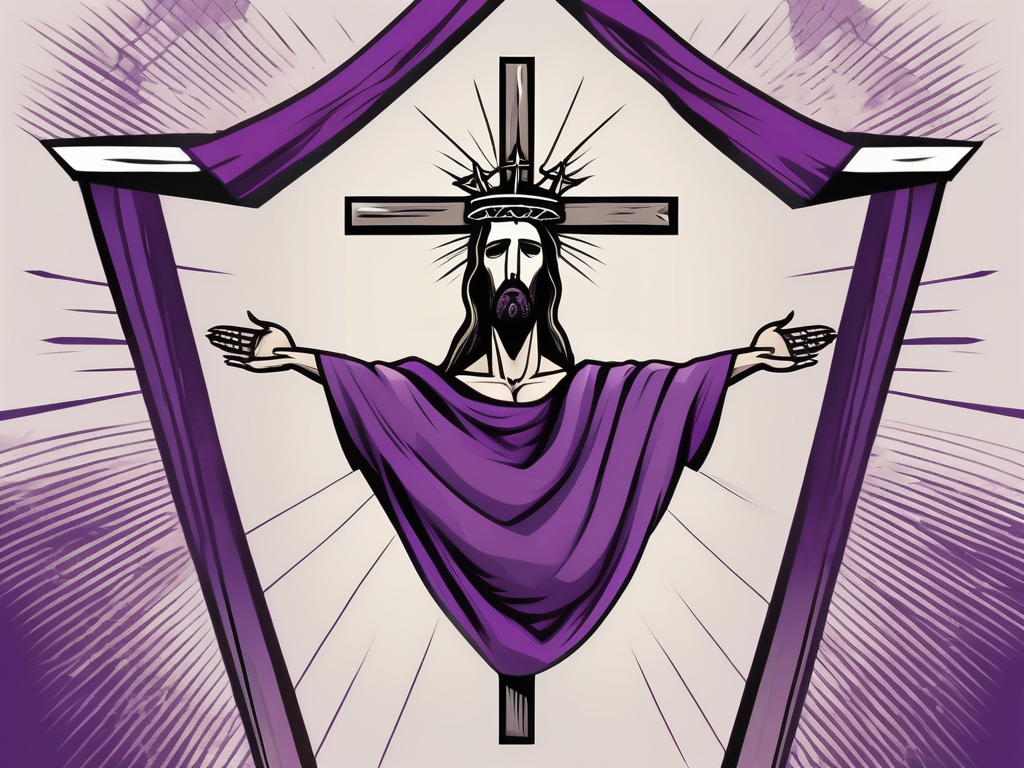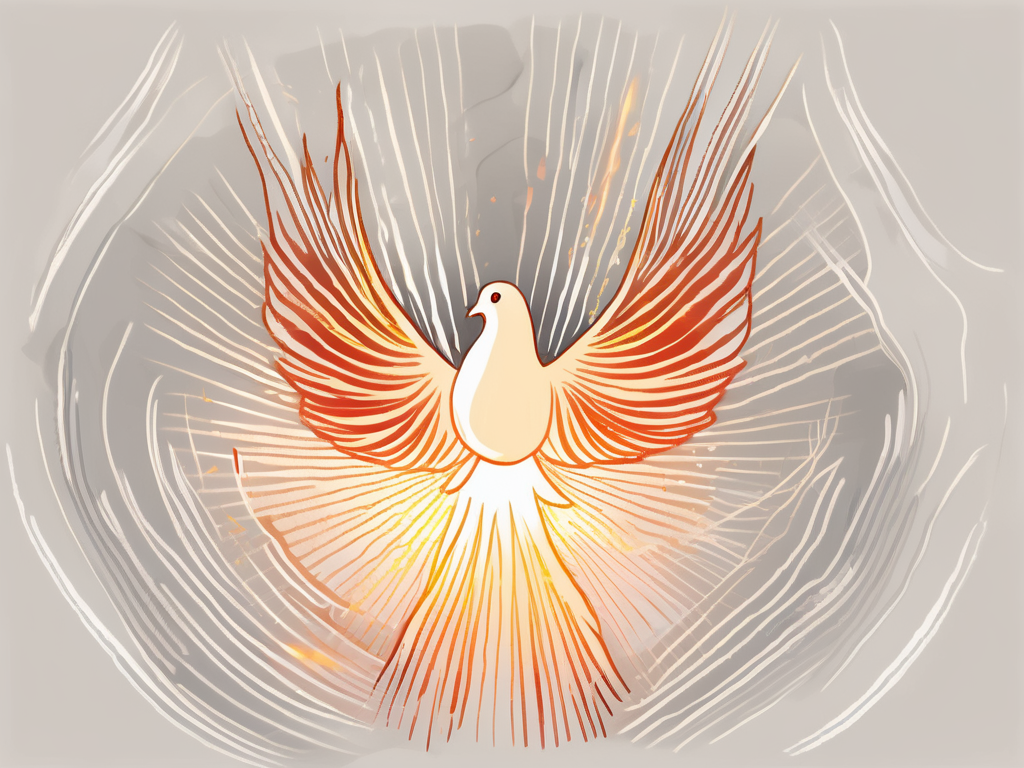Palm Sunday is a significant day in the Christian calendar, marking the beginning of Holy Week and commemorating Jesus Christ’s triumphant entry into Jerusalem. It is a time of reflection, remembrance, and celebration for believers worldwide. Understanding the meaning and symbolism behind Palm Sunday can deepen our appreciation for this sacred event.
Understanding Palm Sunday: An Overview
At its core, Palm Sunday is a celebration of Jesus’ arrival in Jerusalem, just days before his crucifixion and resurrection. It is often referred to as the “Triumphal Entry” since Jesus was hailed as a king by crowds waving palm branches and shouting “Hosanna!” But there is more to this story than a festive parade.
Palm Sunday holds deep significance in the Christian faith, as it marks the beginning of the most pivotal week in Jesus’ life. It is a time of reflection and remembrance, as believers contemplate the sacrifice and love that Jesus displayed during his final days on Earth.
The Biblical Story Behind Palm Sunday
The biblical account of Palm Sunday can be found in the four Gospels – Matthew, Mark, Luke, and John. According to these accounts, Jesus rode into Jerusalem on a donkey, fulfilling the prophecy of Zechariah, which portrayed the Messiah entering the city in this humble manner. The people welcomed Jesus, spreading their cloaks on the road and waving palm branches as a sign of honor and recognition.
Imagine the scene: the dusty streets of Jerusalem filled with anticipation as Jesus, the long-awaited Messiah, approached. The air was thick with excitement and hope as the crowd recognized the significance of this moment. They saw Jesus as the fulfillment of ancient prophecies, the one who would bring salvation and deliverance to Israel.
Little did they know that Jesus’ journey would lead him to the cross, where he would bear the sins of humanity and provide the ultimate sacrifice for our redemption. The Triumphal Entry was just the beginning of a series of events that would forever change the course of history.
The Symbolism of Palm Branches
The use of palm branches during the Triumphal Entry holds symbolic meaning. In biblical times, palm branches were associated with victory, triumph, and peace. They were often used to welcome conquering heroes and to celebrate joyous occasions.
By waving palm branches, the people of Jerusalem were acknowledging Jesus as their victorious Savior, their long-awaited deliverer. Their actions demonstrated their hope and belief that Jesus would establish the Messianic Kingdom, bringing peace and liberation to their troubled land.
Furthermore, the choice of a donkey as Jesus’ mode of transportation also holds significance. In contrast to a majestic horse, a donkey symbolized humility and peace. Jesus’ decision to ride on a donkey emphasized his role as the Prince of Peace, who came not to conquer with force, but to bring salvation through love and sacrifice.
As we reflect on Palm Sunday, let us remember the profound meaning behind this event. It is a reminder of Jesus’ unwavering love for humanity, his willingness to lay down his life for our sake, and the hope we have in his victory over sin and death. May we wave our symbolic palm branches with hearts full of gratitude and praise, acknowledging Jesus as our Savior and King.
The Liturgical Practices on Palm Sunday
Palm Sunday is characterized by several liturgical practices that help believers commemorate the events of Jesus’ entry into Jerusalem and reflect on the significance of his sacrifice. These practices vary among different Christian traditions but often include the following:
The Procession of Palms
One of the most recognizable elements of Palm Sunday is the procession of palms. This involves churchgoers gathering to receive blessed palm branches, often shaped into crosses or other ornate designs. The congregation then proceeds into the church, singing hymns and reenacting the entry of Jesus into Jerusalem. This symbolic act allows individuals to physically participate in the story and enter into the mindset of the crowd that welcomed Jesus.
As the procession moves forward, the air is filled with a sense of anticipation and excitement. The vibrant green palm branches, held high by the faithful, create a colorful wave of devotion. The rhythmic sound of footsteps and the melodic voices of the congregation singing hymns create a harmonious atmosphere, evoking a sense of unity and reverence.
Each palm branch carries its own significance. The palm tree has long been a symbol of victory and triumph, representing the triumphal entry of Jesus into Jerusalem. The crosses or ornate designs made from the palm branches serve as a reminder of the ultimate sacrifice Jesus made on the cross, offering salvation to all who believe.
The Reading of the Passion Narrative
Another key practice on Palm Sunday is the reading of the Passion Narrative, which recounts the events leading up to Jesus’ crucifixion and resurrection. This solemn and moving account helps believers connect with the profound sacrifice Jesus made for humanity. Hearing these biblical passages read aloud reminds us of the immense love and grace displayed by our Savior.
As the Passion Narrative is read, the atmosphere in the church becomes hushed and reverent. The words of the Gospel echo through the sacred space, carrying the weight of the story. Each verse brings to life the emotions and struggles Jesus faced during his final days on earth.
Through the reading of the Passion Narrative, believers are invited to reflect on their own lives and the ways in which they can emulate Christ’s selfless love and sacrifice. It serves as a reminder of the depth of God’s love for humanity and the lengths to which he was willing to go to bring about redemption.
As the reading concludes, a profound silence fills the church. The congregation is left in contemplation, grappling with the magnitude of Jesus’ sacrifice and the hope that his resurrection brings. Palm Sunday sets the stage for the Holy Week, a time of deep reflection and preparation for the celebration of Easter.
Theological Significance of Palm Sunday
Palm Sunday holds deep theological significance within the Christian faith. It serves as a prelude to Holy Week, the most sacred time in Christianity, leading up to Easter Sunday. Let us delve into the theological implications of Palm Sunday and how it enhances our understanding of God’s plan of salvation.
Palm Sunday, with its rich symbolism and historical context, provides believers with a profound opportunity to reflect on the journey of Jesus towards the cross. It is a day that invites us to immerse ourselves in the narrative of Jesus’ final days on earth, to walk alongside him as he enters Jerusalem amidst the waving palm branches and adoring crowds.
Palm Sunday as a Prelude to Holy Week
Palm Sunday sets the stage for the intense and profound events of Holy Week, culminating in Jesus’ crucifixion and resurrection. It reminds believers to prepare their hearts and minds to journey alongside Jesus as he carries the weight of our sins. Palm Sunday invites us to contemplate the suffering, love, and sacrifice that Jesus willingly endured for our sake.
As we enter Holy Week, we are reminded of the significance of Jesus’ entry into Jerusalem. The triumphal procession on Palm Sunday foreshadows the ultimate victory that Jesus would achieve through his death and resurrection. It is a reminder that even in the face of imminent suffering, Jesus remained steadfast in his mission to redeem humanity.
Moreover, Palm Sunday serves as a call to discipleship, urging believers to follow in the footsteps of Jesus. Just as the crowds laid down their cloaks and palm branches, symbolizing their submission and adoration, we are called to surrender our lives to Christ and acknowledge him as our Lord and Savior.
The Triumphal Entry and Its Spiritual Implications
The Triumphal Entry on Palm Sunday also holds spiritual implications for believers. It teaches us about the nature of Jesus and the kind of Messiah he came to be. Instead of coming in a chariot as a conquering king, Jesus humbly rode on a donkey, demonstrating his humility, compassion, and willingness to identify with humanity. His triumph was not through military might, but through sacrificial love.
This act of humility challenges our own understanding of power and authority. It reminds us that true strength lies not in dominance and control, but in selflessness and service. Jesus, the King of Kings, chose to enter Jerusalem in a manner that defied societal expectations, revealing the upside-down nature of God’s kingdom.
Furthermore, the Triumphal Entry highlights the prophetic fulfillment of Scripture. Jesus’ choice to ride on a donkey echoes the words of the prophet Zechariah, who foretold the coming of a humble king who would bring salvation to God’s people. This alignment with prophecy reinforces Jesus’ identity as the long-awaited Messiah and affirms the divine orchestration of God’s plan of redemption.
As we reflect on the theological significance of Palm Sunday, may our hearts be stirred with gratitude and awe for the love and sacrifice of Jesus. Let us enter Holy Week with a renewed sense of purpose and a deepened understanding of God’s plan of salvation.
Palm Sunday Traditions Around the World
While Palm Sunday is universally celebrated among Christians, different cultures have their unique customs and traditions to honor this significant day. Let’s explore some of these diverse traditions that highlight the global unity within the Christian faith.
Palm Sunday in Eastern Orthodox Churches
In Eastern Orthodox Churches, Palm Sunday, often referred to as “Entrance into Jerusalem,” is celebrated with great reverence and pageantry. Believers gather outside the church, holding palm branches, willow branches, or even olive branches, as they reenact Jesus’ entry into Jerusalem. The priest leads the procession, and the people chant hymns praising Christ as their King and Savior.
The use of different branches symbolizes the variety of trees that were present during Jesus’ entry into Jerusalem. The palm branches represent victory and triumph, while the willow branches symbolize the humility and sorrow of the people. Olive branches, on the other hand, signify peace and reconciliation.
The procession itself is a beautiful sight to behold. The streets are adorned with colorful carpets and flowers, creating a festive atmosphere. As the priest walks at the head of the procession, swinging a censer filled with incense, the sweet aroma fills the air, adding to the sense of holiness and devotion.
Western Christianity and Palm Sunday Celebrations
In Western Christianity, Palm Sunday customs vary but often involve the blessing and distribution of palm branches, the reading of the Passion Narrative, and special worship services. Some communities even organize outdoor processions, where participants carry palm branches or crosses, singing hymns and reflecting on the significance of Jesus’ entry into Jerusalem.
One interesting tradition in Western Christianity is the creation of intricate palm crosses. These crosses are made by weaving palm leaves together, symbolizing the unity and interconnectedness of the Christian community. The palm crosses are often kept in homes as a reminder of Jesus’ sacrifice and a source of spiritual strength.
Another unique aspect of Palm Sunday in Western Christianity is the reading of the Passion Narrative. This powerful account of Jesus’ betrayal, trial, and crucifixion serves as a solemn reminder of the sacrifice he made for humanity’s salvation. The reading is often accompanied by hymns and prayers, creating a deeply reflective and emotional atmosphere.
Some communities take their Palm Sunday celebrations a step further by organizing reenactments of Jesus’ entry into Jerusalem. They construct a makeshift path of palm leaves and branches, and individuals dressed as Jesus and his disciples walk along this path, while the rest of the community lines the streets, waving palm branches and singing songs of praise.
Regardless of the specific customs and traditions, Palm Sunday is a day of joy and anticipation for Christians around the world. It marks the beginning of Holy Week, a time of deep reflection and spiritual preparation leading up to Easter Sunday, the celebration of Jesus’ resurrection.
Reflections on Palm Sunday: Personal and Communal
Palm Sunday is not merely a historical event to be observed; it is an opportunity for personal reflection and communal worship. Let us consider how Palm Sunday impacts both our individual faith and our relationship with fellow believers.
The Role of Palm Sunday in Personal Faith
On a personal level, Palm Sunday prompts us to examine our own hearts. It challenges us to ask ourselves if we are truly recognizing Jesus as our King and Savior. Are we laying down our lives before him, acknowledging his lordship, and following his teachings? Palm Sunday invites us to surrender our pride and ego, just as the people of Jerusalem laid their cloaks before Jesus, and to embrace the humility and love exemplified by our Savior.
Palm Sunday and the Christian Community
Palm Sunday also provides an opportunity for communal worship and reflection as believers gather in churches worldwide. It reminds us that we are part of a larger body of believers, united in our faith and devotion to Jesus Christ. Together, we can celebrate his triumphal entry, support one another in our spiritual journeys, and draw strength from our shared love for our Savior.
In Conclusion
Palm Sunday holds great significance within Christianity as it marks the beginning of Jesus’ final journey and his ultimate sacrifice. Understanding the biblical story, the symbolism of palm branches, and the liturgical practices associated with Palm Sunday can help believers engage more deeply with this sacred day. Additionally, learning about the diverse traditions and reflecting on its personal and communal implications allows us to fully appreciate the significance of Palm Sunday in our faith journeys. May we approach this day with humility, gratitude, and a renewed commitment to follow Jesus, our humble and victorious King.



